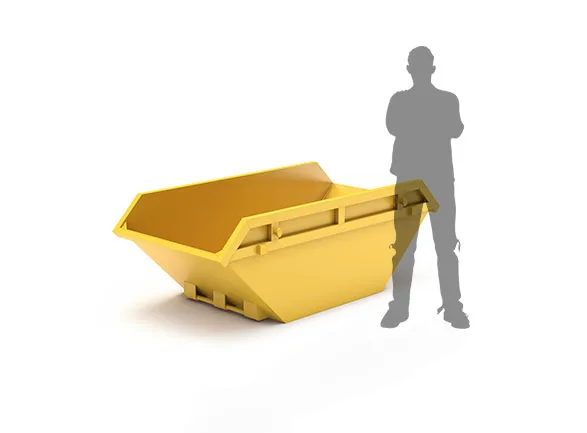In an era where sustainable waste management is paramount, the 2 Yard Skip has emerged as a game-changer. This versatile waste disposal solution, with its modest dimensions and myriad applications, including various skip sizes, is revolutionizing how we handle waste. In this comprehensive guide, we will explore every facet of 2 Yard Skips, from their size to the impact they have on the environment, and everything in between.
1. Skip Bin Size
The term “2 Yard Skip” may seem simple, but it carries profound implications. It denotes the size of the skip bin, specifying its volume capacity. Despite its unassuming dimensions, this skip is a powerhouse when it comes to waste management.
2. Waste Disposal
Waste disposal, a fundamental function of 2 Yard Skips, addresses the critical need for efficient and responsible removal of various types of waste. These skips provide a structured method for discarding household, construction, and commercial waste. By utilizing 2 Yard Skips, communities and businesses can ensure proper containment and transportation of waste to designated disposal sites. This process not only maintains cleanliness but also reduces environmental impact. With their versatile capacity, these skips cater to diverse waste disposal needs, contributing significantly to streamlined waste management practices. Proper waste disposal, facilitated by 2 Yard Skips, promotes a cleaner environment and supports sustainable living.

3. Construction Industry
In the construction industry, efficient waste management is crucial. Construction sites generate copious amounts of waste, and 2 Yard Skips provide a streamlined solution. They not only enhance cleanliness but also improve site safety by ensuring debris is properly contained.
4. Waste Management
Waste management, a core aspect of 2 Yard Skips, involves systematic collection, disposal, and recycling of waste materials. By employing these skips, waste management becomes more organized and eco-friendly. These bins facilitate the segregation of recyclables, reducing the strain on landfills. Efficient waste management not only ensures cleanliness but also contributes significantly to environmental sustainability. Proper waste disposal practices, coupled with recycling efforts, minimize pollution and conserve resources. 2 Yard Skips, as part of a robust waste management strategy, empower communities and businesses to handle waste responsibly, promoting cleaner environments and a greener future.
5. Environmental Conservation
The responsible use of 2 Yard Skips aligns with environmental conservation efforts. By promoting recycling and encouraging responsible waste disposal, these skips alleviate the strain on landfills, minimize pollution, and safeguard our natural ecosystems.
6. Size and Dimensions
Understanding the precise dimensions of 2 Yard Skips is crucial for selecting the right skip for the job. Typically, they are compact, with dimensions that ensure they can fit into confined spaces while still providing substantial waste capacity.
7. Rental Services
To access the benefits of 2 Yard Skips, many companies offer rental services. These services provide an affordable and flexible waste management solution, allowing individuals and businesses to hire skip bins for specific durations.
8. Loading Capacity – 2 Yard Skip
The loading capacity of 2 Yard Skips is a pivotal aspect to consider, ensuring safe and efficient waste disposal. Adhering to the specified weight limits prevents overloading, which can lead to transportation challenges and potential accidents. By understanding and respecting the loading capacity, users guarantee secure loading, unloading, and transportation. It ensures the structural integrity of the skip, minimizing wear and tear, and allowing for smooth waste management operations. Acknowledging and following these limits not only promote safety but also optimize the skip’s functionality, providing a reliable solution for waste disposal needs.
9. Regulations and Permits
Local regulations and permits govern the placement and use of skip bins, including 2 Yard Skips. Understanding and complying with these regulations is vital to avoid legal complications and ensure a smooth waste disposal process.
10. Recycling Practices
Incorporating recycling practices alongside the use of 2 Yard Skips is essential for a sustainable approach to waste management. Educating users about segregating recyclable materials from general waste is key to reducing environmental impact.
11. Skip Bin Material
The materials used in constructing 2 Yard Skips, often metal or plastic, play a pivotal role in their durability and longevity. High-quality materials ensure that the skip bins can withstand the rigors of various waste disposal tasks.
12. Cost and Pricing
Understanding the cost and pricing structure of 2 Yard Skips is essential for making informed decisions in waste management. Various factors influence pricing, such as the rental duration, location, additional services, and the waste disposal company’s policies. Comparing quotes from different providers allows individuals and businesses to find the best value for their specific needs. Moreover, being aware of any hidden costs, like permits or additional weight fees, ensures accurate budgeting. By comprehensively evaluating the cost and pricing details, customers can plan their waste disposal effectively, maximizing efficiency while staying within budget constraints.
13. Delivery and Pickup Services
Delivery and pickup services are the backbone of efficient waste management solutions, ensuring a seamless experience for users of 2 Yard Skips. Reliable service providers offer timely delivery, placing the skip precisely where needed, and prompt pickups upon completion. This convenience not only saves time but also enhances project efficiency. Professional services guarantee proper handling and disposal, meeting local regulations. Customers can focus on their tasks, knowing that waste disposal is handled swiftly and responsibly. Such services alleviate the logistical burden, making waste management a hassle-free process for businesses and individuals alike.
14. Safety Measures
Safety measures associated with 2 Yard Skips are paramount to ensure secure waste disposal procedures. Adhering to weight limits is crucial; overloading the skip could lead to hazardous situations during transportation and unloading. Proper loading techniques are essential to distribute weight evenly and prevent accidents during filling and emptying processes. Users should wear appropriate safety gear, including gloves and sturdy footwear, to minimize the risk of injuries. Adequate illumination around the skip, especially in low light conditions, enhances visibility and reduces accidents. Signage indicating weight limits and safety guidelines is vital to inform workers and passersby about potential hazards.
Regular maintenance of the skip, checking for any damages or structural issues, is imperative to prevent accidents during usage. Providing clear instructions and guidelines to users regarding the types of materials allowed and prohibited in the skip promotes safe disposal practices. Safety training for workers involved in skip usage and waste disposal procedures further ensures a secure working environment.
By emphasizing and enforcing these safety measures, the risk of accidents and injuries related to 2 Yard Skips is significantly reduced. Prioritizing safety not only protects individuals involved in waste disposal but also promotes a culture of responsibility and care in waste management practices.
15. Alternative Waste Disposal Methods
Exploring alternative waste disposal methods is critical in today’s environmentally conscious world. Beyond traditional approaches like landfilling, numerous innovative methods have emerged to mitigate the environmental impact of waste. Recycling centers, for instance, are hubs of sustainability where materials are sorted and processed for reuse, conserving resources and reducing landfill waste. Composting facilities offer another eco-friendly solution, converting organic waste into nutrient-rich compost for agriculture.
Waste-to-energy plants represent cutting-edge technology, converting waste into electricity or heat. This not only reduces landfill dependency but also generates renewable energy. Additionally, incineration facilities with advanced filtration systems minimize air pollution, transforming waste into energy while adhering to strict environmental standards.
Community-based initiatives, such as neighborhood clean-up events and awareness campaigns, foster responsible waste disposal habits. Furthermore, upcycling initiatives encourage creativity by repurposing waste materials into new products, reducing the overall demand for raw resources.
By embracing these alternative methods, societies promote circular economies, minimize landfill usage, and combat climate change. Educating communities about these options empowers individuals to make informed choices, fostering a sustainable future for generations to come.
16. Local Waste Disposal Regulations
Local waste disposal regulations play a pivotal role in shaping the way communities manage their waste. These regulations, established by local authorities, are designed to ensure safe and environmentally responsible waste disposal practices. They dictate how waste should be sorted, handled, and disposed of, emphasizing the importance of recycling and proper waste segregation. Waste disposal companies and individuals alike must adhere to these guidelines, ensuring that waste is disposed of in designated areas or facilities.
Moreover, local waste disposal regulations often include rules regarding skip bin placement, specifying where these bins can be located to avoid obstructing public spaces or causing inconvenience to others. Failure to comply with these regulations can result in fines and legal consequences. By understanding and following these local regulations, communities contribute to cleaner environments, reduce pollution, and foster a sense of responsibility towards the planet. Additionally, compliance with these regulations ensures harmony within communities, promoting a clean and sustainable living environment for everyone.
Conclusion
In conclusion, the 2 Yard Skip represents more than just a waste disposal container; it symbolizes a sustainable future. By understanding its various dimensions and integrating it into a comprehensive waste management strategy, communities and businesses can play a pivotal role in promoting cleaner, greener environments. These skips empower us to manage waste efficiently while minimizing our impact on the planet, making them an indispensable tool in the modern world of waste management.
